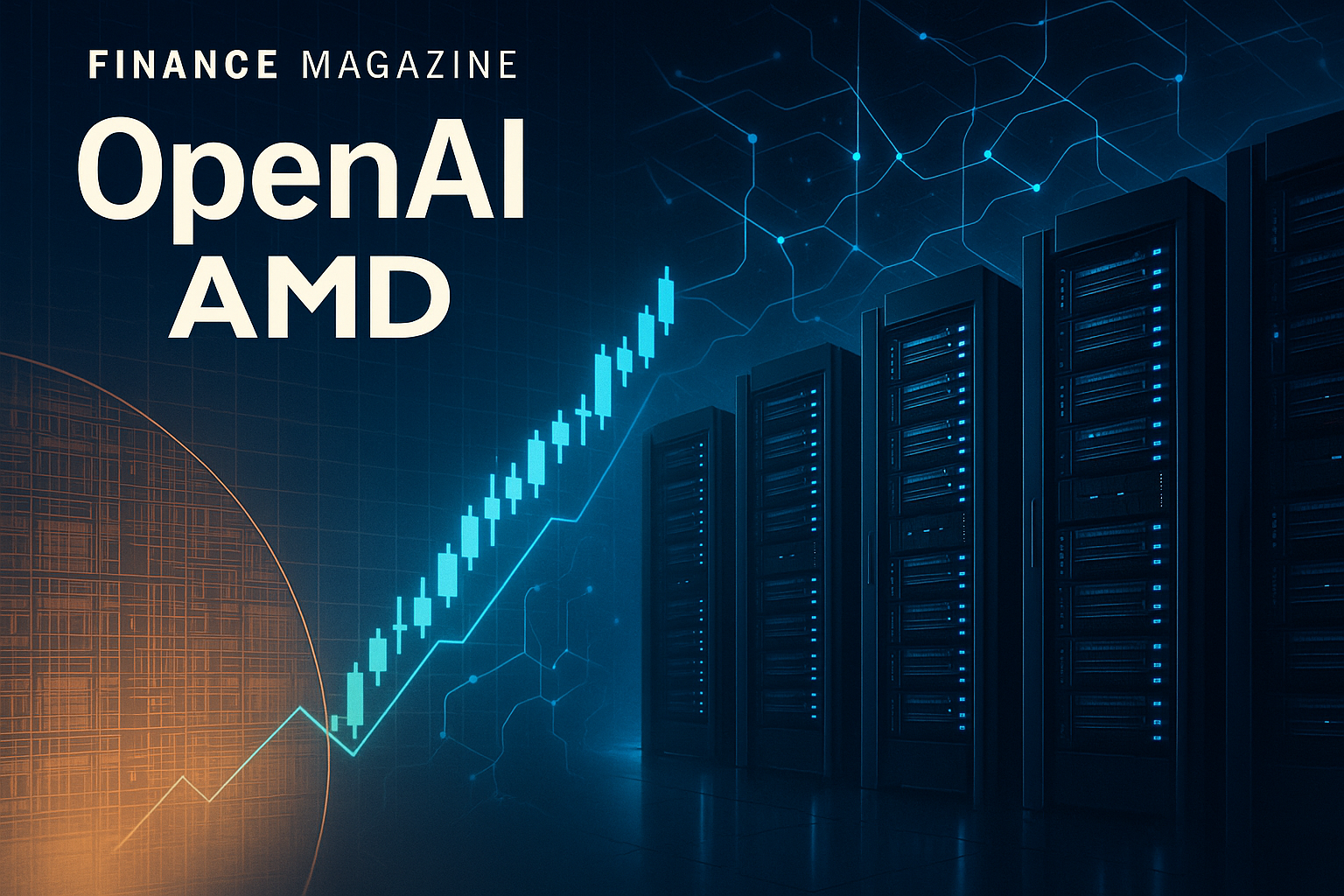OpenAI Strikes Monumental AI Chip Deal with AMD, Eyes 10% Stake in Chipmaker
By Tredu.com • 10/6/2025
Tredu

A New Frontier: OpenAI AMD Chip Deal Emerges
In a move sending shockwaves through the semiconductor and AI sectors, OpenAI has entered into a sweeping supply deal with AMD to fuel its next-generation AI infrastructure. The OpenAI AMD chip deal positions AMD as a strategic compute partner and gives OpenAI a pathway to a 10% stake in the chipmaker, upending assumptions in the AI infrastructure chips race.
Why This Deal Matters
Scaling AI Demands New Hardware
OpenAI's ambitions to expand its model deployment and data center footprint require unprecedented compute capacity. The OpenAI AMD chip deal means access to AMD's forthcoming MI450 series GPUs, a critical component in the AI data centers now under construction. According to the announcement, AMD will deliver up to 6 gigawatts of compute over time, with an initial 1-gigawatt deployment slated for H2 2026.
This infrastructure boost is essential to support ever larger AI models, faster inference, and more intensive training cycles across OpenAI’s services.
Equity Upside: OpenAI’s Option to Acquire a Stake
Beyond raw chip supply, the deal includes a warrant for OpenAI to acquire up to 160 million AMD shares, roughly equivalent to 10% ownership, contingent on hitting deployment and stock-price milestones.
That structure aligns incentives: OpenAI benefits if AMD performs well, while AMD locks in a major AI client. In effect, the deal blends hardware procurement with strategic investment.
Market Fallout & Strategic Implications
AMD in the Spotlight; Nvidia Faces Pushback
AMD’s stock responded with a dramatic surge, jumping over 23–25% in premarket trading, as the market digested the scale and symbolic weight of the deal. Nvidia shares, by contrast, slipped slightly on fears of increasing competitive pressure.
Analysts see this partnership not just as AMD catching up, but as OpenAI intentionally diversifying away from an overreliance on Nvidia.
A Calculated Move in a Capital-Intensive Race
Industry watchers note that compute demand far outpaces supply. OpenAI’s deal with AMD complements, rather than cannibalizes, its existing Nvidia partnership, a $100 billion compute pact deployed over multiple gigawatts.
By securing multiple chip sources and an equity interest in one, OpenAI hedges risks, gains negotiating leverage, and ensures long-term alignment across its hardware stack.
Engineering & Deployment: What to Watch
MI450 as the Workhorse
The MI450 architecture will be central to fulfilling the 6 GW compute promise. OpenAI expects the first 1 GW to roll out in late 2026, with additional phases to follow.
What’s key is whether AMD and OpenAI can meet delivery timelines, yield targets, and integration challenges, that will determine whether the deal becomes legendary or merely ambitious.
Milestones, Vesting & Strategic Framing
The equity warrant vests across tranches tied to compute deployment and escalating AMD stock targets (reportedly up to $600 per share in final vesting scenarios).
That ambitious price framework underscores the deal’s high risk / high reward bet: if AMD and OpenAI execute well, the upside is tremendous for both sides.
Broader Implications for the GPU & AI Landscape
- A Shift in Strategic Alliances
OpenAI’s tilt toward AMD signals that even dominant players like Nvidia can be challenged in the AI supply chain, especially when pairing hardware deals with equity incentives. - Compute Scarcity & Pricing Power
As demand surges for AI training and inference, chipmakers will gain leverage. Deals like this may drive up pricing or favor longer-term partnerships over spot purchases. - Vertical Integration Trends
OpenAI continues investing in its own silicon roadmap while hedging with external partners. The AMD deal complements those vertical ambitions and broadens OpenAI’s strategic runway.
In sum, the OpenAI AMD chip deal is both a bold procurement play and a strategic investment. It gives OpenAI access to high-powered AI infrastructure chips while offering a path to partial ownership of AMD. As compute demands balloon across the AI industry, this partnership defines how the hardware arms race will be fought, and who gets to control the foundations.

How to Trade Like a Pro
Unlock the secrets of professional trading with our comprehensive guide. Discover proven strategies, risk management techniques, and market insights that will help you navigate the financial markets confidently and successfully.


